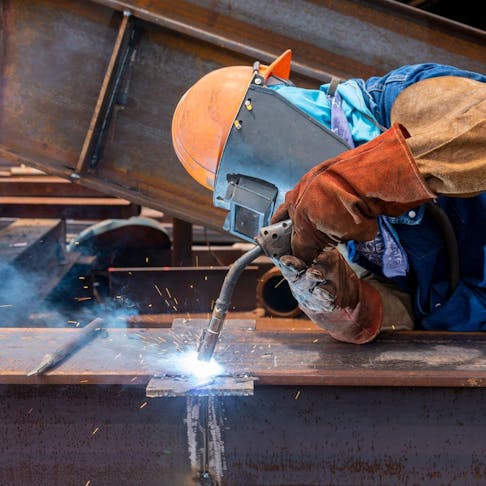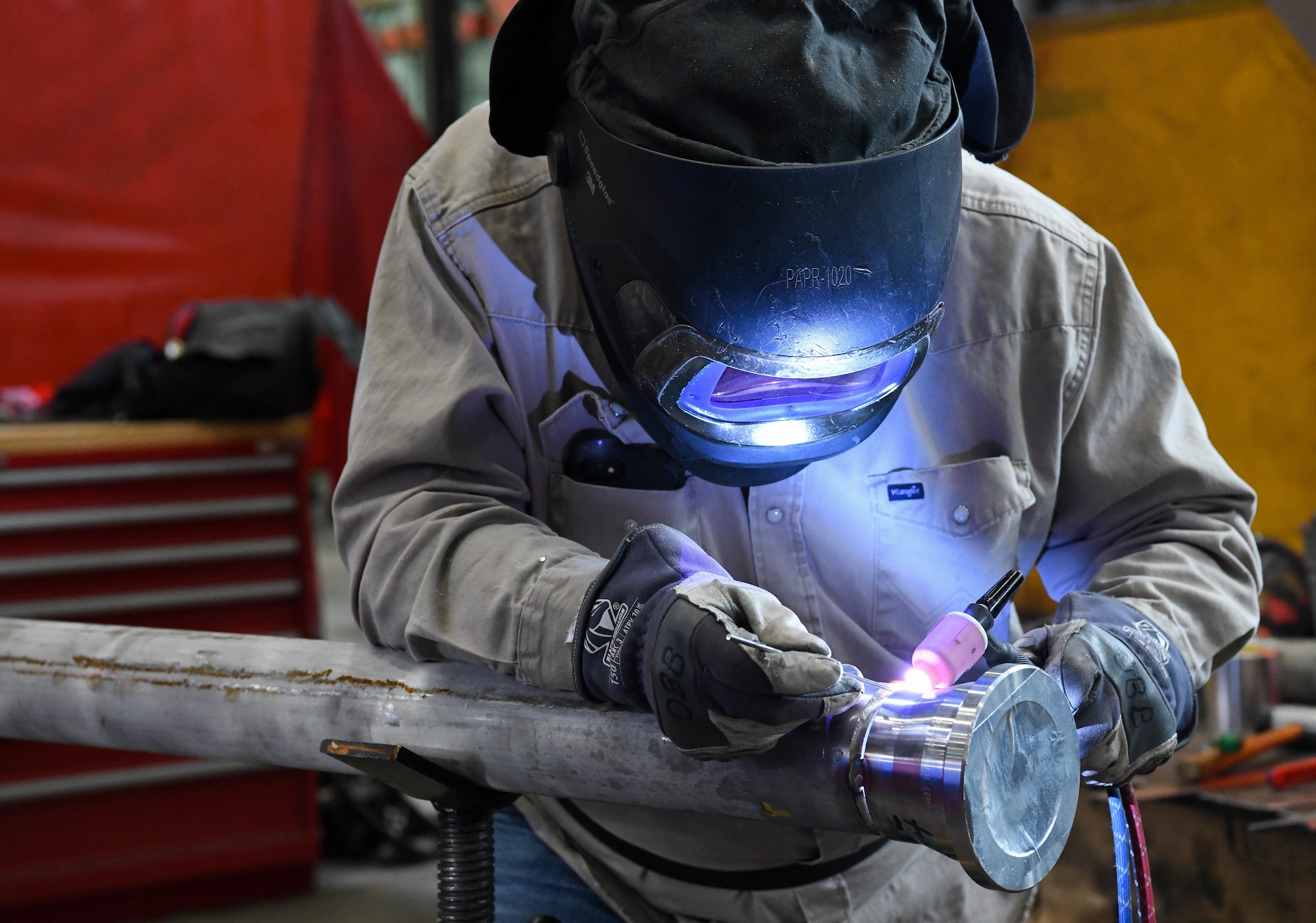Usual Welding Repair Service Issues and Exactly How to Address Them Properly
Welding repairs typically come across an array of problems that can endanger the stability of the final item. Usual troubles consist of insufficient penetration, porosity, and imbalance, to name a few. Each problem presents distinct difficulties that need particular methods for resolution. Recognizing these issues is important for welders aiming to boost their end results and skills. This conversation will check out these common welding repair problems and reliable methods to address them.
Inadequate Penetration
Insufficient penetration happens when the weld steel fails to totally fuse with the base product, causing weak joints and possible structural failings. This concern frequently stems from insufficient warmth input, incorrect electrode angle, or improper welding speed. Welders might experience poor infiltration because of a miscalculation of the needed specifications for a certain material thickness or type. Additionally, contamination on the base material's surface area can impede reliable bonding, aggravating the issue. To attend to poor infiltration, welders should guarantee proper setups on their devices and preserve a clean job surface area. Normal inspection of welds is suggested to determine any kind of shortages early, enabling for timely corrections and the avoidance of jeopardized architectural integrity in bonded assemblies.
Porosity
Porosity is a typical flaw in welded joints that manifests as small gas bubbles trapped within the weld metal. This problem can jeopardize the integrity of the weld, causing decreased stamina and prospective failing under stress and anxiety. Montana Mobile Welding and Repair Welding. Porosity usually arises from contamination, wetness, or incorrect welding techniques, which permit gases to escape right into the molten weld swimming pool. To resolve porosity, welders need to guarantee proper surface area preparation, maintain a clean workplace, and use ideal welding criteria. Additionally, selecting the best filler product and protecting gas can alleviate gas entrapment. Normal assessment and screening of welds can aid determine porosity early, ensuring prompt restorative activities are taken, thus preserving the top quality and integrity of the welded structure
Misalignment
Misalignment in welding can emerge from numerous variables, including improper configuration and thermal growth. Comprehending the origin is necessary for efficient resolution. Numerous improvement methods are offered to straighten elements and assure structural integrity.
Reasons for Misalignment
Welding imbalance usually comes from a range of underlying problems that can endanger structural stability. One key cause is incorrect fit-up of components prior to welding, which can result in voids and uneven surface areas. Variations in thermal expansion during the welding procedure can likewise result in distortion, specifically if the products being signed up with have different coefficients of expansion. Additionally, insufficient fixturing and securing might fail to hold components safely in location, resulting in activity throughout welding. Improperly kept devices, consisting of welding machines and tools, might present disparities in the weld bead, more contributing to misalignment. Ultimately, driver error, originating from insufficient training or experience, can likewise play a significant duty in developing misaligned welds.
Improvement Methods Available
Addressing misalignment properly requires a combination of corrective strategies tailored to the particular concerns at hand. One common method is the usage of jigs or fixtures to hold components in the appropriate position during welding, ensuring regular placement. Furthermore, pre-heating the products can assist minimize distortion and boost fit-up. For significant imbalance, mechanical realignment strategies, such as using hydraulic jacks or clamps, can be utilized to fix the placement before welding. Post-weld heat therapy might likewise be essential to eliminate tensions brought on by imbalance. Finally, mindful assessment and modification during the arrangement stage can stop imbalance concerns from becoming substantial issues, advertising a smoother welding process and improving total architectural integrity.
Distortion
Distortion is a typical challenge in welding that can arise from various aspects, consisting of unequal heating and cooling. Understanding the reasons for distortion is important for applying effective prevention methods. Resolving this issue not just boosts structural honesty yet also boosts the general high quality of the weld.
Reasons for Distortion
When subjected to the intense warm of welding, materials frequently go through adjustments that can cause distortion. This sensation mostly arises from thermal development and tightening during the welding procedure. As the weld location heats up, the product broadens; upon air conditioning, it gets, which can develop inner stresses. Additionally, irregular heating throughout a work surface can worsen these stresses, resulting in warping or flexing. The type of material additionally plays a considerable function; metals with differing thermal conductivity and coefficients of expansion might respond differently, leading to unpredictable distortions. Moreover, bad joint style and poor fixturing can add to imbalance during welding, increasing the probability of distortion. Understanding these reasons is essential for reliable welding repair work and prevention techniques.
Prevention Techniques
Reliable prevention methods for distortion throughout welding focus on regulating warm input and making sure correct joint style. Maintaining a regular heat input helps click to read to minimize thermal development and contraction, which can bring about distortion. Using methods such as preheating the work surface can likewise reduce the temperature level slope, promoting uniform heating. Additionally, selecting ideal joint styles, such as T-joints or lap joints, can improve stability and lower stress and anxiety focus. Implementing correct fixturing to secure the work surfaces in position further aids in keeping alignment throughout the welding process. Staggered welding series can distribute warmth a lot more equally, stopping local check that distortion. By applying these methods, welders can greatly reduce the possibility of distortion and improve the general top quality of their welds.
Splitting
Breaking is an usual issue encountered in welding repair services, typically resulting from different aspects such as incorrect air conditioning prices, product choice, or insufficient joint preparation. The event of splits can significantly endanger the honesty of the weld, causing prospective failings during operation. To resolve this concern, welders need to initially analyze the origin, ensuring that materials are suitable and suitably picked for the details application. In addition, regulating the air conditioning rate during the welding procedure is vital; quick cooling can induce tension and bring about splitting. Correct joint design and prep work also add to decreasing the risk. Executing these methods can boost weld high quality and resilience, ultimately minimizing the probability of splitting in ended up weldments.

Incomplete Fusion
A substantial concern in welding repair services is insufficient fusion, which takes place when the weld metal does not properly bond with the base product or previous weld passes - Montana Mobile Welding and Repair Belgrade. This defect can bring about weak points in the joint, possibly endangering the honesty of the welded structure. Elements adding to incomplete combination include inadequate warmth input, incorrect welding method, and contamination of the surfaces being signed up with. To address this issue properly, welders ought to ensure correct pre-weld cleaning and surface preparation, in addition to change their welding criteria to achieve adequate infiltration and combination. Normal examination during the welding process can also aid recognize incomplete combination early, enabling timely rehabilitative measures to boost the total top quality of the weld
Overheating
While welding repairs can boost structural stability, overheating presents a substantial challenge that can cause material deterioration. Extreme heat during welding can change the mechanical homes of steels, causing lowered strength, enhanced brittleness, and warping. This sensation is especially important in high-stress applications where architectural reliability is paramount. Recognizing overheating can entail aesthetic like it evaluations for staining or distortion, along with keeping track of temperature throughout the welding procedure. To alleviate the threats related to getting too hot, welders must employ ideal strategies, such as controlling heat input, readjusting travel rate, and using ideal filler materials. Additionally, carrying out pre- and post-weld warmth therapies can help recover material properties and improve the overall top quality of the fixing, ensuring long-term efficiency and safety and security.
Often Asked Concerns
What Are the Usual Indicators of a Welding Issue?

Just How Can I Check My Welds for Quality?
To evaluate welds for top quality, one can utilize visual assessments, ultrasonic screening, and radiographic methods. Each technique assures architectural integrity, determines flaws, and verifies adherence to specified requirements, ultimately boosting the integrity of the bonded joints.
What Safety Preventative Measures Should I Take While Welding?
When welding, one should prioritize safety and security by using proper individual safety tools, guaranteeing proper air flow, safeguarding flammable materials away, maintaining a tidy office, and understanding environments to avoid mishaps and injuries.
Can I Repair a Weld Without Renovating the Entire Joint?
Fixing a weld without remodeling the whole joint is feasible, depending on the damages (Montana Mobile Welding and Repair Belgrade). Methods such as grinding, adding filler material, or making use of a welding procedure can properly resolve specific defects while preserving the surrounding framework
What Tools Are Important for Efficient Welding Fixes?
Vital devices for effective welding repairs consist of a welding device, cable brush, grinder, safety gear, clamps, and filler materials. Each device plays an essential duty in making certain quality and security throughout the fixing procedure. Porosity generally arises from contamination, moisture, or incorrect welding strategies, which enable gases to run away into the liquified weld pool. Improperly maintained tools, consisting of welding makers and devices, may present incongruities in the weld grain, additional contributing to misalignment. When subjected to the extreme warm of welding, products often undertake modifications that can lead to distortion. Splitting is a common issue encountered in welding repairs, commonly resulting from different aspects such as improper air conditioning prices, product choice, or inadequate joint prep work. A considerable problem in welding repairs is insufficient combination, which happens when the weld steel does not adequately bond with the base product or previous weld passes.
Comments on “Montana Mobile Welding and Repair Welding shares solutions on addressing heat distortion effectively”